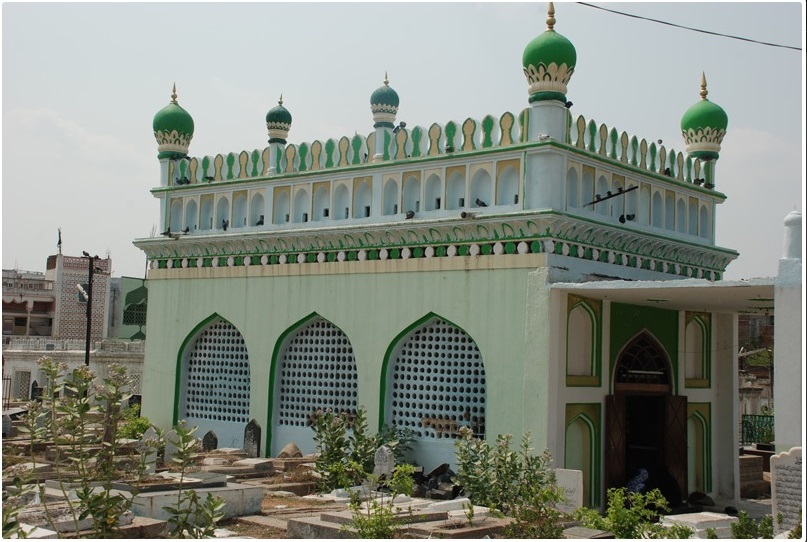The graveyard, constructed in the 16th century, is named after Mir Momin, the Prime Minister of Muhammad Quli Qutb Shah. Mir Momin hailed from Astrabad (in Persia) and is known as the planner of Hyderabad City under the Qutb Shahis. He had this site designated as a sanctified graveyard by mixing in it the soil from the battlefield of Karbala.
After Mir Momin’s death in 1625, he was buried here, within the site now bequeathed as a free burial ground for Muslims. Other notable personalities buried in this precinct include Shah Chiragh, the Muslim divine from Najaf (in Iraq), the poet Mirza Muhammad (Naimat Khan Ali), who held high office with Aurangzeb, musician Bade Ghulam Ali and also several members of the families of Salar Jung I and Il.
The graveyard, constructed in the 16th century, is named after Mir Momin, the Prime Minister of Muhammad Quli Qutb Shah. Mir Momin hailed from Astrabad (in Persia) and is known as the planner of Hyderabad City under the Qutb Shahis. He had this site designated as a sanctified graveyard by mixing in it the soil from the battlefield of Karbala.
After Mir Momin’s death in 1625, he was buried here, within the site now bequeathed as a free burial ground for Muslims. Other notable personalities buried in this precinct include Shah Chiragh, the Muslim divine from Najaf (in Iraq), the poet Mirza Muhammad (Naimat Khan Ali), who held high office with Aurangzeb, musician Bade Ghulam Ali and also several members of the families of Salar Jung I and Il.
